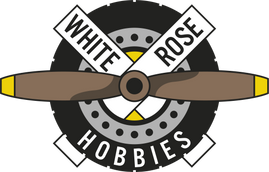
MTH Premier 20-3807-1 O Scale 4-8-8-4 Big Boy Steam Loco Union Pacific UP 4014
Just months before Pearl Harbor, the American Locomotive Company delivered the first Big Boy to the Union Pacific Railroad. The UP's Department of Research and Mechanical Standards had designed the locomotive for a specific task: to pull a 3600-ton train unassisted over the Wasatch Mountains in Utah. While the Big Boy is often cited as the biggest steam locomotive ever built, in fact it is not. The Norfolk & Western's Y6 and A, the Duluth Missabe & Iron Range's Yellowstones, and the Chesapeake and Ohio's Alleghenys were all in the same league, and some exceeded the Big Boy's weight and power.
But in the battle for hearts and minds, the Big Boy won. Perhaps it was the name, simple and direct, scrawled on a locomotive under construction by an Alco shop worker. Maybe it was timing, as the Big Boys hit the road just when America needed symbols to rally around. Maybe the UP's publicity department just did a better job of telling the world what great equipment they had. Whatever the reason, the Big Boy captured the imagination of railfans and the American public over the ensuing years, perhaps more than any other steam engine. In many ways it is the symbolic locomotive of the American West, as big and powerful as the country it sped through.
Writer Henry Comstock beautifully described the Big Boy's place at the apex of steam engine history: "A Union Pacific 'Big Boy' was 604 tons and 19,000 cubic feet of steel and coal and water, poised upon 36 wheels spaced no wider apart than those of an automobile. That it could thunder safely over undulating and curved track at speeds in excess of 70 miles an hour was due in large measure to the efforts of two long-forgotten pioneers. As early as 1836, the basic system that held its wheels in equalized contact with the rails was patented by a Philadelphian named Joseph Harrison; and a French technical writer, Anatole Mallet, first thought to couple two driving units heel to toe below one boiler in 1874."
This enduring symbol of American railroading returns to the rails for 2017, complete with quillable, variable intensity steaming whistle. Blow the whistle from your DCS handheld controller, smartphone or tablet, and watch the whistle steam output vary as you “play” the whistle like a prototype engineer.
FEATURES:
- Intricately Detailed, Die-Cast Boiler and Chassis
- Intricately Detailed, Die-Cast Tender Body
- Die-Cast Metal Chassis
- Authentic Paint Scheme
- Die-Cast Locomotive Trucks
- Handpainted Engineer and Fireman Figures
- Painted Cab Backhead Gauges
- Legible Builders Plates
- Metal Handrails, Whiste and Bell
- Tender Truck Chains
- Metal Wheels and Axles
- Remote-Controlled Proto-Coupler
- Kadee Coupler Mounting Pads
- Prototypical Rule 17 Lighting
- Constant Voltage LED Headlight
- Operating LED Firebox Glow
- Lighted LED Cab Interior
- Operating Tender LED Back-up Light
- Operating LED Emergency Backup Light
- Powerful 7-Pole Precision Flywheel-Equipped Motor
- Synchronized Puffing ProtoSmoke System
- Steaming Quillable Whistle
- Locomotive Speed Control In Scale MPH Increments
- Wireless Drawbar
- 1:48 Scale Dimensions
- Onboard DCC/DCS Decoder
- Proto-Scale 3-2 3-Rail/2-Rail Conversion Capable
- Proto-Sound 3.0 With The Digital Command System Featuring Quillable Whistle With Passenger Station Proto-Effects
- Unit Measures: 35 x 2 7/8 x 4 1/8
- Operates On O-72 Curves Steam
- DCC Features:
- F0 Head/Tail light
- F1 Bell
- F2 Horn
- F3 Start-up/Shut-down
- F4 PFA
- F5 Lights (except head/tail)
- F6 Master Volume
- F7 Front Coupler
- F8 Rear Coupler
- F9 Forward Signal
- F10 Reverse Signal
- F11 Grade Crossing
- F12 Smoke On/Off
- F13 Smoke Volume
- F14 Idle Sequence 3
- F15 Idle Sequence 2
- F16 Idle Sequence 1
- F17 Extended Start-up
- F18 Extended Shut-down
- F19 Labor Chuff
- F20 Drift Chuff
- F21 One Shot Doppler
- F22 Coupler Slack
- F23 Coupler Close
- F24 Single Horn Blast
- F25 Engine Sounds
- F26 Brake Sounds
- F27 Cab Chatter
- F28 Feature Reset
